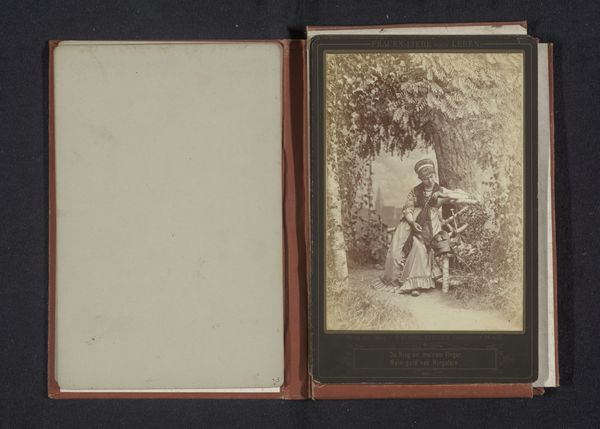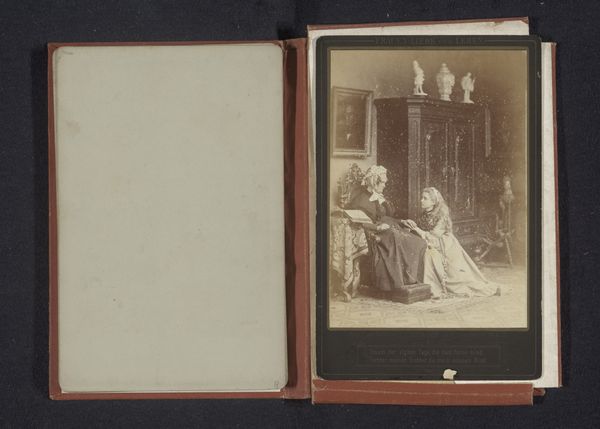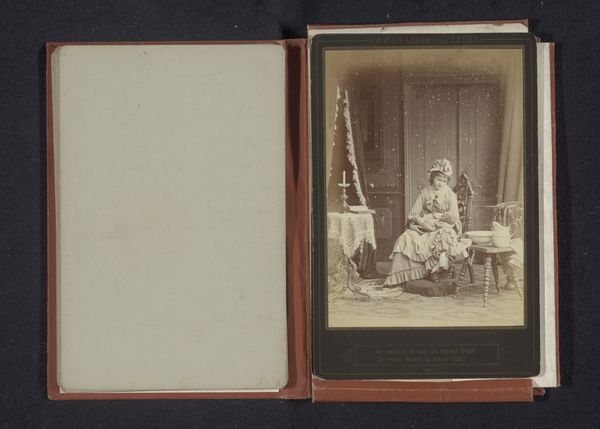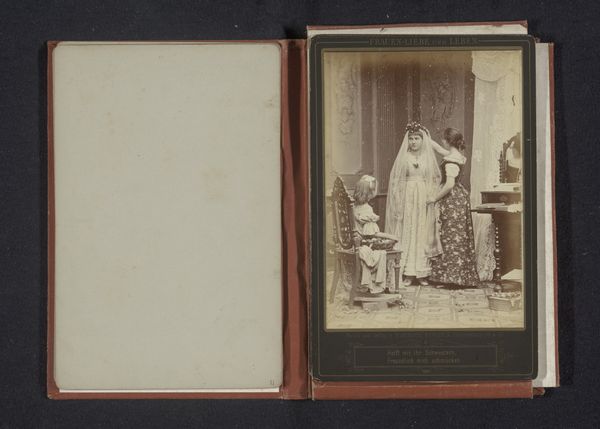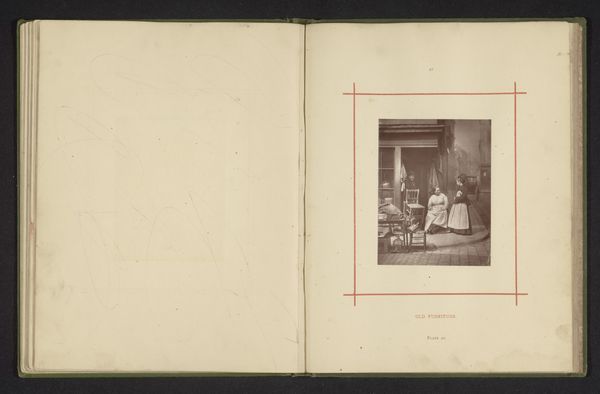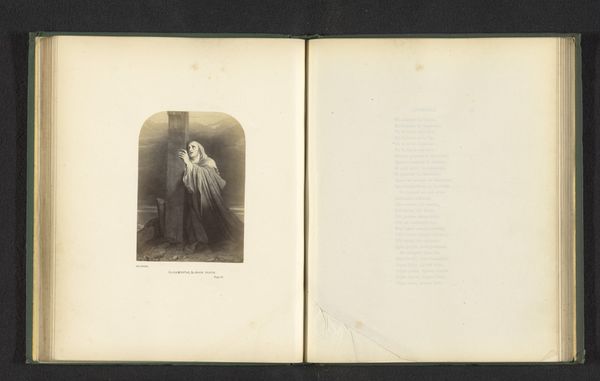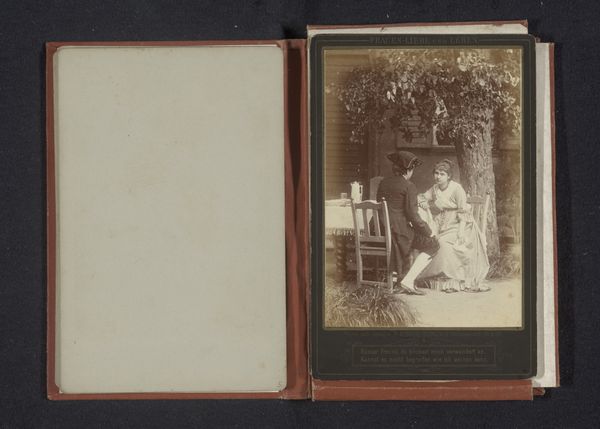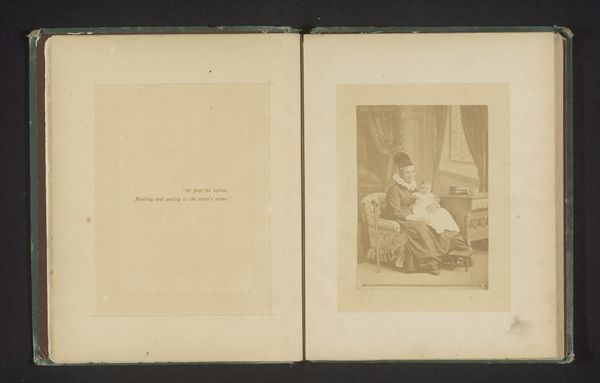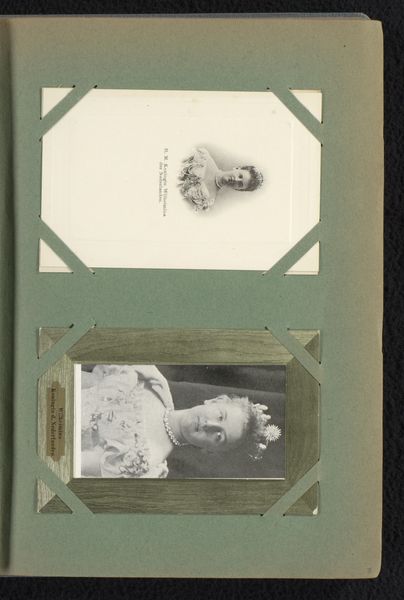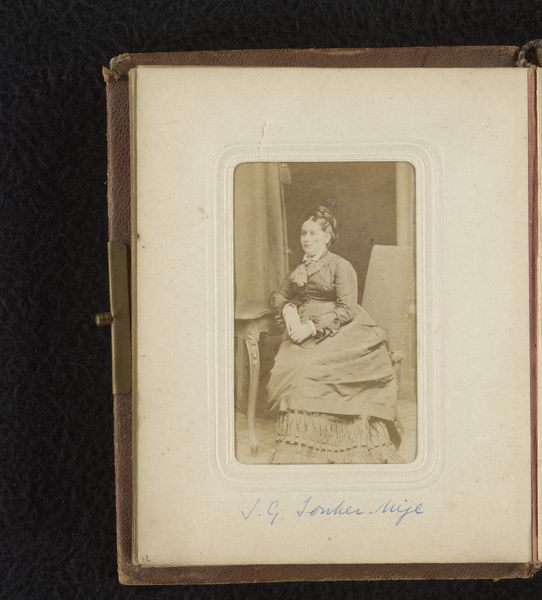
Dimensions: height 134 mm, width 95 mm
Copyright: Rijks Museum: Open Domain
Editor: This is a gelatin-silver print from 1880 titled "Portret van een onbekende vrouw zittend in een raamkozijn" by H. Hirsch. It's quite charming! There’s something so intimate about this woman sitting in her window. What stands out to you? Curator: Immediately, I consider the context of 1880 and the rising middle class. Photography was becoming more accessible, shifting from a purely upper-class luxury to something attainable for aspiring families. We see evidence of that social climbing in the backdrop and her dress: those meticulously crafted drapes, that ornate little table, and the detail in the garments– they signify not only an aspiration to luxury, but an awareness of how one’s material possessions are coded. Editor: So, you’re saying the photo itself becomes a sort of commodity? Curator: Precisely! Consider the labor involved. From the gelatin-silver process itself, a complex chemical endeavor, to the dressmaking. Were these fabrics sourced locally? Was the photographer part of a larger studio, a business endeavor employing multiple hands? Those details surrounding her dress - handmade lace? Where did that originate and what’s it’s context and purpose. This isn’t just a portrait; it's a carefully constructed image intended for consumption and perhaps social advancement. Editor: It makes you think about all the unseen labor. So much is communicated beyond just the woman in the image. Curator: Exactly! Think of it as a material document, revealing not just the subject, but the economic and social forces at play during its creation and distribution. It causes me to reflect on the conditions behind photography, then and now. Editor: That’s fascinating. I never considered how deeply embedded social messaging can be in photographic materials and labor. Thanks for sharing that perspective.
Comments
No comments
Be the first to comment and join the conversation on the ultimate creative platform.

